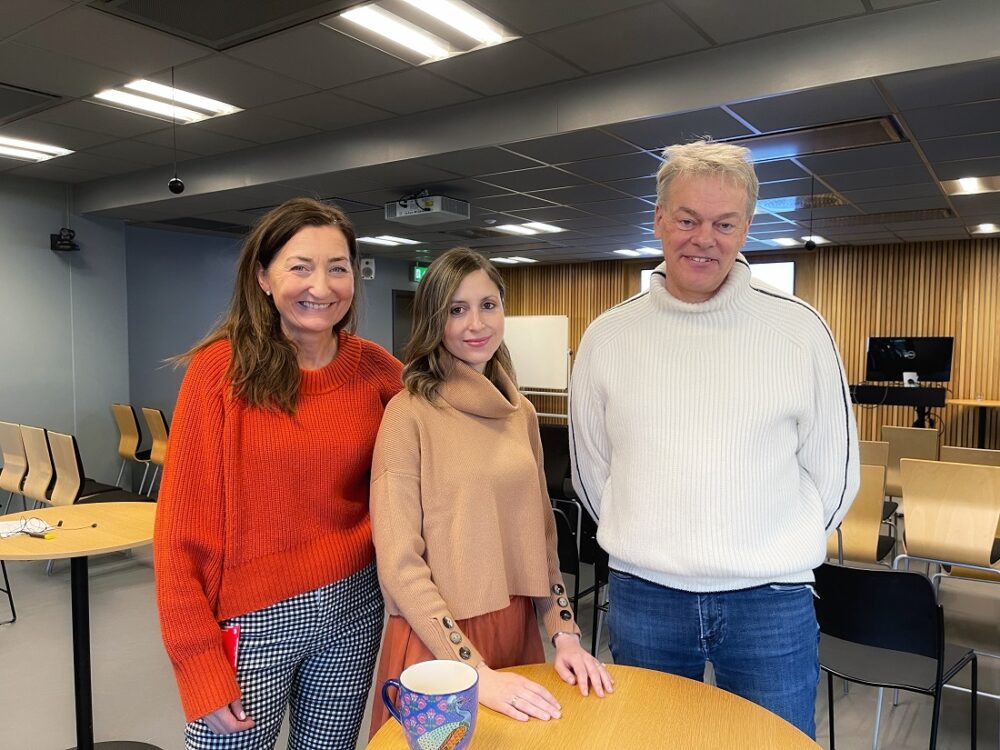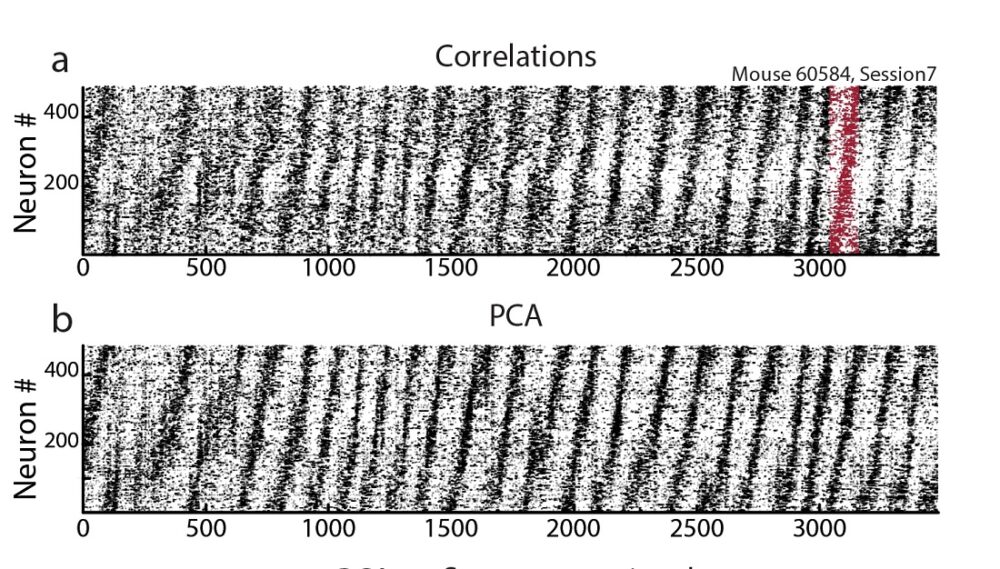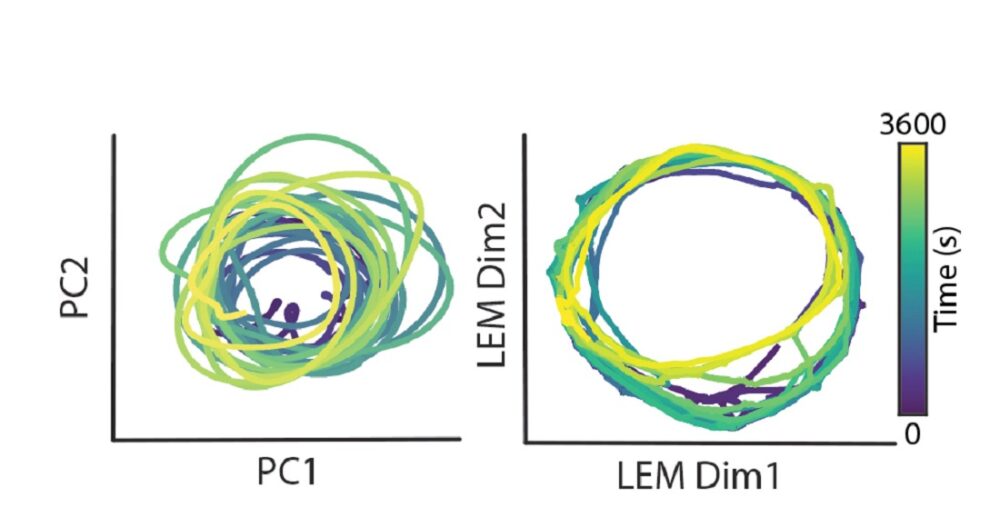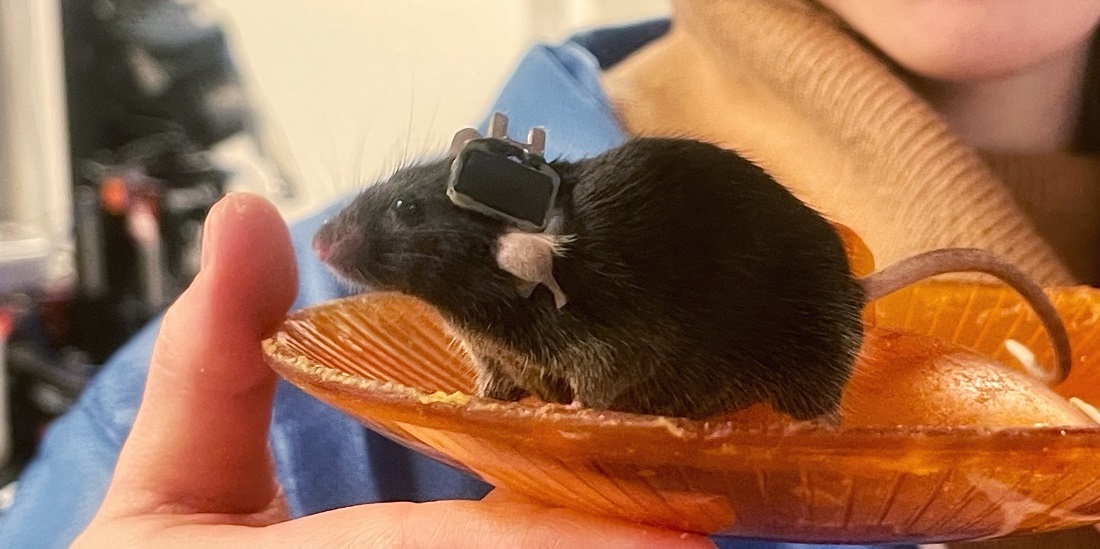A framework in your brain for organizing the order of things
Scientists at NTNU’s Kavli Institute for Systems Neuroscience in Norway have discovered a pattern of activity in the brain that serves as a template for building sequential experiences.
“I believe we have found one of the brain’s prototypes for building sequences,” says Professor Edvard Moser.
He describes the activity pattern as “a fundamental algorithm that is intrinsic to the brain and independent of experience.” The breakthrough discovery was published in Nature 20 December 2023.
The ability to organize elements into sequences is a fundamental biological function essential for our survival. Without it, we would not be able to communicate, to keep track of time, to find our way, or even remember what we are in the process of doing. The world would cease to present itself to us in meaningful experiences, as every event would be fragmented into an erratic series of random happenings.
The NTNU researchers’ discovery of a rigid sequence pattern in the brain provides new insights into how we organize experiences into a temporal order.

May-Britt Moser, Soledad Gonzalo Cogno and Edvard Moser. Photo: Kavli Institute for Systems Neuroscience
The sequential nature of memory
Have you ever heard memories described as snapshots? That is not a very faithful description, according to Professor Edvard Moser. “It is more helpful to think of memories as videos,” he says.
“All your experiences in the world extend over time,” says Professor May-Britt Moser. “One thing happens, then another thing, then a third.”
Your brain has the remarkable ability to mentally capture and organize selected events into the chronological order in which they occurred, and to link them together as meaningful experiences. This sequence building activity takes place on the timescale in which you interact in the situation. When you recall this memory, the process of reliving the sequence of events in your mind also takes time.
“How is the brain able to generate and store all these unique and lengthy sequences of information on the fly?”, asks Edvard Moser. “There has to exist a foundational mechanism for sequence formation there.”
“There is a mismatch in neuroscience between the timescales at which brain activity is typically studied, in the millisecond regime, and the timescales at which many of our most important brain functions occur, in the tens of seconds to several minutes range,” says Soledad Gonzalo Cogno, Kavli Research Group Leader and first author of the paper, expanding on the motivation behind this study.
The team set out to identify this fundamental mechanism for sequence formation, which occurs on very slow timescales, like most of our brain functions do.
- You may also like: We move along the surface of a doughnut
The experiment
To uncover how neurons coordinate at the slow timescales at which many of our brain functions unfold, the Kavli researchers focused on the medial entorhinal cortex (MEC), a brain area that supports brain functions that depend on sequence formation, such as navigation and episodic memory, which unfold very slowly in time.
Episodic memories
- Your mind continuously collects experiences that you can recall and reexperience at a later time. These stored episodes from your past are called episodic memories.
- They differ from other types of memories in the way that episodic memories are unique, happened only once, and are linked to the time and place where you first lived them.
- Episodic memories are often rich in multisensory information that can trigger emotions and other memories. Recalling an episodic memory can feel like doing a mental time travel.
The sheer volume of information about the outside world being processed in the brain at any one time posed a challenge to the pursuit. Any baseline signal from structured and recurrent neural algorithms would risk drowning in the “noise” of incoming experience.
To get around this, the researchers created an experimental environment that was almost devoid of sensory inputs. They let a mouse run in complete darkness, with no task to complete and no reward to earn. The mouse could run or rest as it pleased, for as long as the session lasted.
At the same time, the researchers recorded what was happening in the entorhinal cortex of the mouse’s brain while its orchestra of nerve cells remained in this soft-spoken standby position.
- You may also like: Smells and emotions tug on the brain’s “rein”
A fundamental brain mechanism for sorting information into sequences
“This is what we found,” says Soledad Gonzalo Cogno, pointing to a zebra-striped figure in front of her.
The pattern is made up of thousands of dots clustered together. Each dot is a neural signal. We can see that the neural activity moves through all the cells from bottom to top along the Y-axis as time progresses along the X-axis. The clustering tells us that the activity is coordinated as waves running through the network, like rhythms in a symphony. The sequences are ultra-slow, meaning that it takes two minutes for the wave to travel through the neural network, before the whole process repeats again, sometimes for as long as the duration of the test session, over periods of up to an hour.
The hippocampal formation
- The ability to store, retrieve, and learn from specific episodes of life is common to humans and other mammals.
- There are two areas of the brain that play a crucial role in these processes: One is a seahorse-shaped structure called the hippocampus. The other, called the entorhinal cortex, sits on top of the seahorse like a hat.
- These two brain structures are part of a large system involved in making sense of the world. They enable you to navigate in the world, to keep track of time, to keep track of relationships, and they provide you with rich and meaningful memories that not only connect you to your history in this present moment but can also guide your actions when you experience new but similar situations in the future.
The figure shows several hundred mouse entorhinal cortex neurons oscillating at ultra-slow frequencies, spanning time windows ranging from tens of seconds to several minutes. The dynamic that excited the researchers even more is that as each cell oscillates, the cells also organise themselves into sequences, with cell A firing before cell B, cell B firing before cell C, and so on, until they have completed a full loop and return to cell A, where the cycle repeats. This highly structured activity overlaps with the timescale of events that we encode into our memories and provides the perfect template for building the sequential structure that forms the basis of episodic memories.

The raster plot shows several hundred mouse entorhinal cortex neurons oscillating at ultra-slow frequencies, spanning time windows ranging from tens of seconds to several minutes. As each cell oscillates, they also organise themselves into sequences in which cell A fires before cell B, cell B fires before cell C, and so on, until they have completed a full loop and return to cell A, where the cycle repeats. Illustration: Kavli Institute for Systems Neuroscience
These waves of coordinated activity did not travel in a straight line from one end of the brain tissue to the other. Instead, the waves travel along the thin synaptic connections between cells that talk to each other in the network. Cells can talk to other cells far away as well as to their nearest neighbours. The anatomical tangle makes it difficult to see coordinated activity with the naked eye without first having located the cells from the raster plot. This video illustrates this.
Zebra-stripes, Spiral, and Ring
The zebra-striped raster plot shows the slow waves of activity through the whole network over a period of time.
“If you fold the raster plot into a tube, so that the top and the bottom of the figure overlap, you will see that the diagonal stripes connect to form a coherent spiral,” explains May-Britt Moser. “The spiral represents the network activity over time”.
If you rotate the spiral by 90 degrees, you will see a ring. All the cells in the network have their set time to fire, distributed across the surface of this ring. The signal travels through the entire ring structure before returning to the same cell.
“This ring is a signature for coordination patterns in the form of repetitive sequences, which is what we found in the MEC”, says Soledad Gonzalo Cogno. “Other brain areas have different coordination patterns”.

The one ring that rules all neural activity during sequence formation.
Episodic memories are made up of sequences of information. This ring structure provides the brain with a prototype for organising sequences of events into memories of unique experiences that can be stored and retrieved when needed. One sequence corresponds to one loop in the ring. 500 cells can be summarised by their position on this ring. The ring-shaped prototype in the entorhinal cortex is a low-dimensional template from which high-dimensional memories can be organised in the hippocampus, one synapse downstream. Illustration: Kavli Institute for Systems Neuroscience
Your brain may already be equipped with this ring before you experience anything in this world. It is acquired through evolution and may be specified in our genes
“What excites me most about this discovery is the prospect that these sequences may open up for new ways of understanding the brain,” says Gonzalo Cogno. “The discoveries that follow may challenge the way we think about coordination throughout the brain. Cells that are so different still seem to be coordinated and work together on different timescales.”
Reference: Soledad Gonzalo Cogno. May-Britt Moser. Edvard Moser. Minute-scale oscillatory sequences in medial entorhinal cortex. Nature. DOI: 10.1038/s41586-023-06864-1
Institution: Kavli Institute for Systems Neuroscience, NTNU: Kavli Institute for Systems Neuroscience – NTNU. Centre for Algorithms in the Cortex
Twitter/X: Twitter: twitter.com/kisneuro





